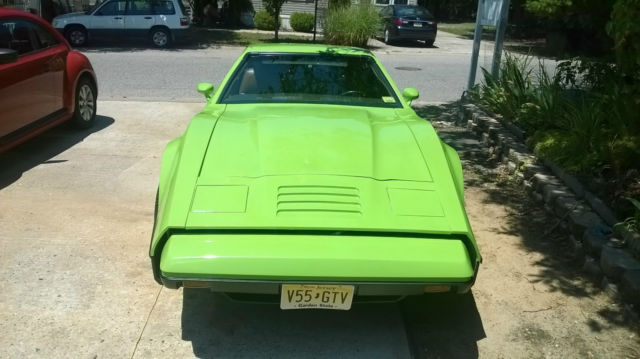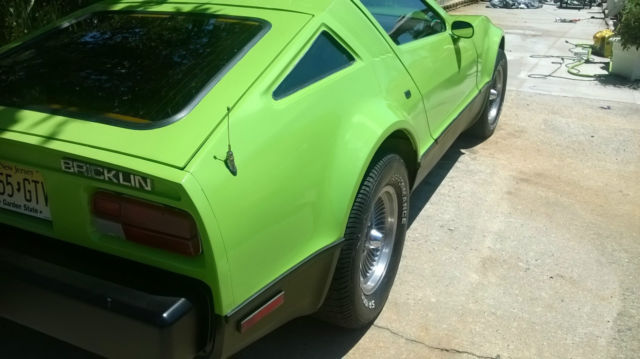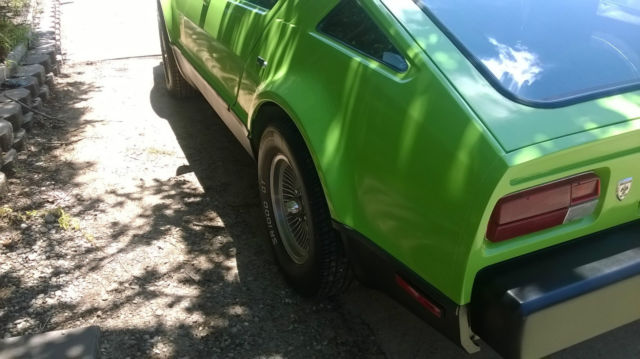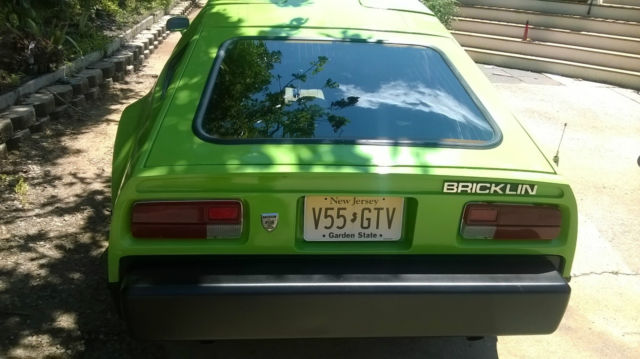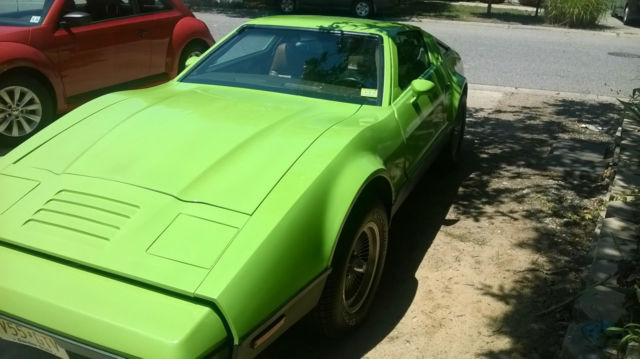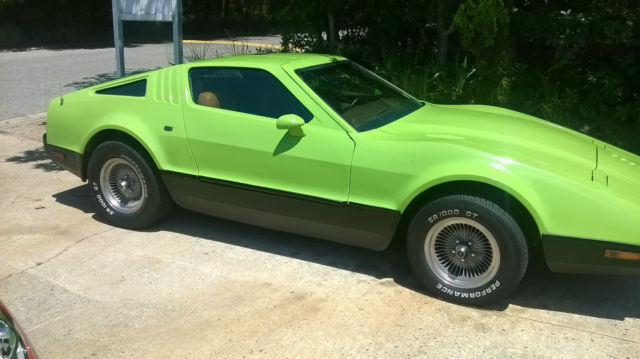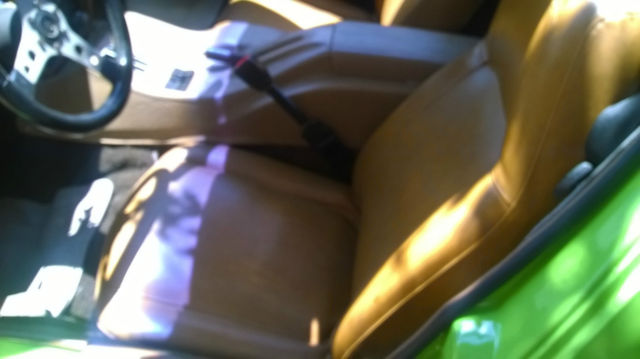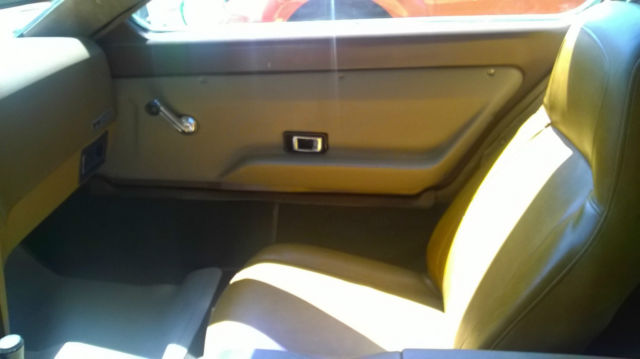1975 Bricklin SV-1
Technical specifications of Other Makes SV-1 1975
| Price: | - |
|---|---|
| Item location: | Sioux Falls, South Dakota, United States |
| Make: | Other Makes |
| Model: | SV-1 |
| Type: | Hatchback |
| Year: | 1975 |
| Mileage: | 21,006 |
| VIN: | 00041BX55002211 |
| Color: | Red |
| Engine size: | 351 |
| Number of cylinders: | 8 |
| Transmission: | Automatic |
| Drive type: | RWD |
| Interior color: | Tan |
| Options: | Leather Seats |
| Vehicle Title: | Clear |
| You are interested? | Contact the seller! |
Description
To our knowledge this Briklin is original, it is in average condition for its age. Runs and drives just fine. Both power gull wing doors are operational. Only around 500 of these are known to be around anymore, if you want to have something unique, this is the perfect vehicle!History of the 1974-1975 Bricklin SV-1The Bricklin SV-1 was conceived in 1973, when the U.S. auto industry was in a slump due to fuel shortages, emissions regulations, and increased safety requirements. Subaru importer Malcolm Bricklin believed there was a seam in the market for a “safe” and individual sports car, so he persuaded the Canadian government to invest money for construction of such a car in depressed New Brunswick. Cost overruns and quality control problems with the inexperienced workforce led to eventual bankruptcy. The first Bricklins were built in 1974, and the factory shut down in late 1975, with a few 1976 models built from leftover parts.
Despite looking like a mid-engine two-seater, the Bricklin squeezed an AMC 360-cid V-8 under the car’s sharply sloping hood. Later cars had a Ford 351 V-8 but only the first year offered a four-speed transmission. The bumpers at both ends of the car were massive urethane bolsters and the body was fiberglass, with color molded in. The doors were electro-hydraulically operated gullwings that weighed a hefty 100 pounds apiece. The Bricklin was introduced at $7,900, rising to $9,995 for the last models.
The “SV” (for “Safety Vehicle”) part of the name was backed up by the car’s steel cage and big bumpers. Color choices were bold in virulent orange, yellow, and green, red and white, and tan. Interiors were typical 1970s, with button-tufted faux suede seats and AMC gauges. In all, 2,897 cars were sold before the bailiffs appeared on the doorstep. A political scandal followed amid claims that the Canadian government had been trying to keep the factory open until the next election.
Early cars suffered from overheating problems, which were quickly solved by a bigger radiator and more vents. The gullwing doors proved too heavy for the initial lifting system, and could trap passengers in the car when they failed. An upgraded compressed-air door system was developed, but SV-1s were sold with tiny broom handles as a failsafe, reflecting most owners’ solution to the problem.
Despite the Bricklin’s troubled story, the marque has a dedicated and loyal following, and several parts suppliers offer door conversion kits and body parts. Be aware that while the fiberglass body is rustproof, the steel frame is not, so examine it very carefully. Bricklins are a great choice for a contrarian in search of a conversation piece, as the chances of seeing another one on the road are slight. Mechanical parts are relatively easy to source and once the overheating and door problems are solved, the cars are quite usable.
" >The Bricklin SV-1 was conceived in 1973, when the U.S. auto industry was in a slump due to fuel shortages, emissions regulations, and increased safety requirements. Subaru importer Malcolm Bricklin believed there was a seam in the market for a “safe” and individual sports car, so he persuaded the Canadian government to invest money for construction of such a car in depressed New Brunswick. Cost overruns and quality control problems with the inexperienced workforce led to eventual bankruptcy. The first Bricklins were built in 1974, and the factory shut down in late 1975, with a few 1976 models built from leftover parts.
Despite looking like a mid-engine two-seater, the Bricklin squeezed an AMC 360-cid V-8 under the car’s sharply sloping hood. Later cars had a Ford 351 V-8 but only the first year offered a four-speed transmission. The bumpers at both ends of the car were massive urethane bolsters and the body was fiberglass, with color molded in. The doors were electro-hydraulically operated gullwings that weighed a hefty 100 pounds apiece. The Bricklin was introduced at $7,900, rising to $9,995 for the last models.
The “SV” (for “Safety Vehicle”) part of the name was backed up by the car’s steel cage and big bumpers. Color choices were bold in virulent orange, yellow, and green, red and white, and tan. Interiors were typical 1970s, with button-tufted faux suede seats and AMC gauges. In all, 2,897 cars were sold before the bailiffs appeared on the doorstep. A political scandal followed amid claims that the Canadian government had been trying to keep the factory open until the next election.
Early cars suffered from overheating problems, which were quickly solved by a bigger radiator and more vents. The gullwing doors proved too heavy for the initial lifting system, and could trap passengers in the car when they failed. An upgraded compressed-air door system was developed, but SV-1s were sold with tiny broom handles as a failsafe, reflecting most owners’ solution to the problem.
Despite the Bricklin’s troubled story, the marque has a dedicated and loyal following, and several parts suppliers offer door conversion kits and body parts. Be aware that while the fiberglass body is rustproof, the steel frame is not, so examine it very carefully. Bricklins are a great choice for a contrarian in search of a conversation piece, as the chances of seeing another one on the road are slight. Mechanical parts are relatively easy to source and once the overheating and door problems are solved, the cars are quite usable.
Source: Hagerty Classic Car
NO RESERVE!!! Call Moe @ 605-275-4040
